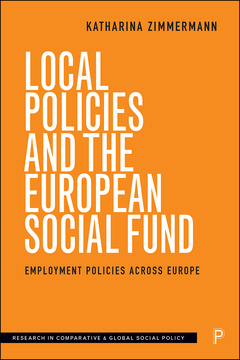Published
Jun 30, 2021Page count
202 pagesISBN
978-1529217469Dimensions
203 x 127 mmImprint
Bristol University PressPublished
Jun 30, 2021Page count
202 pagesISBN
978-1529217476Imprint
Bristol University PressPublished
Jun 30, 2021Page count
202 pagesISBN
978-1529217476Imprint
Bristol University PressThroughout the history of European integration, economic wealth has increased to the benefit of citizens in the European Union (EU). However, inequalities in well-being persist within and between Europe’s regions, undermining the legitimacy of the EU in the eyes of citizens. This book investigates how the EU can use its regional funding programmes in ways that increase citizen well-being.
The book shows that while EU social investments improve labour market performance in rich regions, they exacerbate income inequality in poor regions. Based on this insight, the book presents a theory on the conditions under which EU funding will enhance well-being. Crucially, it argues the case for enhancing the inclusivity of EU growth, which yields the promise of a more legitimate and stronger union.
“How have 20 years of European Union social spending improved well-being? The answer: not much. Dellmuth’s brilliant analysis is a wake-up call for advocates of a more inclusive, fairer Europe.” Liesbet Hooghe, University of North Carolina at Chapel Hill
Lisa Dellmuth is Associate Professor of International Relations in the Department of Economic History and International Relations at Stockholm University.
Foreword - Bo Rothstein
1. Rethinking Regional Development
2. Social Goals in EU Regional Development Policy
3. A Theory of EU Spending and Regional Well-Being
4. Patterns of Regional Well-Being
5. EU Spending Effects on Regional Well-Being
6. Barriers to Improving Regional Well-Being
7. Regional Well-Being, Inclusive Growth and EU Legitimacy
Appendix A: Qualitative and Standardized Interview Data
Appendix B: EU Social and Economic Investments
Appendix C: Measuring Poverty and Inequality
Appendix D: Patterns of Regional Well-Being
Appendix E: Determinants of Regional Well-Being
















